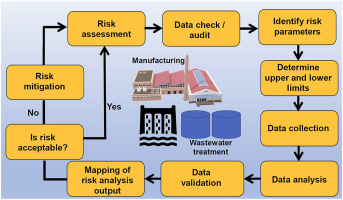Wastewater can be a major environmental issue, so it’s vital that you create a management plan to handle your wastewater properly.
A wastewater management plan can help rural and urban businesses manage their waste with care, minimising their impact on the environment substantially. They can also help identify wastewater sources, create budgets for your business, find waste solutions, update existing plans, or establish new ones.
In this article, we’ll give you the information you need to get started on a wastewater management plan.
What Is Wastewater?
Before we start, it’s a good idea to understand what wastewater is. Wastewater is water that has been used, contaminated or altered from its original state.
Effectively, it is water that has already served a purpose or been tampered with – making it unsafe to reuse. It might contain organic matter, nutrients, pollutants and toxic substances.
Commercial buildings, industrial plants, and agricultural activities are the most common wastewater sources. However, domestic properties will also emit some degree of wastewater.
#1 Assessing Your Needs
The first step to figuring out your wastewater management plan is assessing your needs. You will want to consider factors such as:
- Size – what is the size of your wastewater production?
- Chemical Composition – What are your wastewater’s hazardous materials, chemicals, or substances?
- Temperature – is the temperature of your wastewater within regulation?
- Location – where is your wastewater being released?
It’s important to assess the details of your plan, as individual waste issues will require specific management solutions. Once you have assessed your needs, you can create a plan that meets those needs and any relevant local regulations.
#2 Designing A System
Once you’ve identified the needs of your wastewater system, it’s time to design one that meets those needs.
It’s worth noting that it’s best to do this with the help of wastewater management professionals, as they can offer expert advice and equipment to help you manage your water waste.
The first step is to determine the size of the treatment facility needed. This can depend on a variety of factors, such as:
- The population served by your facility
- Environmental regulations
- Economic constraints
An accurate assessment must be made to ensure that the size of the wastewater facility meets all requirements.
Once a decision has been made, the next step will be to pick a design for your treatment system – anything from simple septic tanks to more complex aeration plants.
#3 Obtaining Permits And Approvals
Obtaining the necessary permits and approvals for a wastewater plan is important. Understanding the regulations that must be followed to get these important documents is essential.
The following steps should be taken when obtaining permits and approvals:
- Research local, state, and federal regulations related to wastewater management plans.
- Apply for any relevant permits or exemptions from relevant agencies.
- Develop a timeline for approval of any required documentation.
- Ensure all paperwork is submitted on time and accurately according to the standards set by governing bodies.
Once all documents are reviewed and approved, the wastewater plan can proceed with implementation.
It is critical to follow all guidelines carefully and adhere to all laws related to waste management and local ordinances that may apply to avoid costly mistakes or fines down the road.
#4 Choosing Equipment And Supplies
The selection of equipment and supplies is essential for successfully implementing a wastewater plan. Depending on the type of wastewater, various equipment may be needed to ensure efficient and effective treatment.
For instance, mechanical filters can remove physical particles from wastewater, while activated sludge processes are required to break down organic matter. Also, disinfection systems such as ultraviolet (UV) light or ozone can kill bacteria and other microorganisms.
When selecting supplies, it is important to consider the nature of the wastewater and its composition to determine which products are most suitable.
#5 Installation & Maintenance Procedures
Installing and maintaining a wastewater plan can be challenging, but it can be accomplished with the right procedures. Follow these steps to implement your plan:
- Select an appropriate location to install the system conducive to proper functioning.
- Ensure all components are connected properly and securely, following local regulations.
- Check for any obstructions or issues that could interfere with flow rates or the system’s operation.
- Inspect the system regularly to identify any necessary repairs or replacements.
Finally, maintain a schedule for cleaning out tanks and filters as necessary.
Conclusion,
Wastewater is an important resource to consider when setting up a plan. By assessing needs and designing a system that works for your business, you can ensure your wastewater plan is successful.
Contact a professional wastewater management company for advice and detection services when in doubt. When it comes to waste, it’s always better to be safe than sorry!











